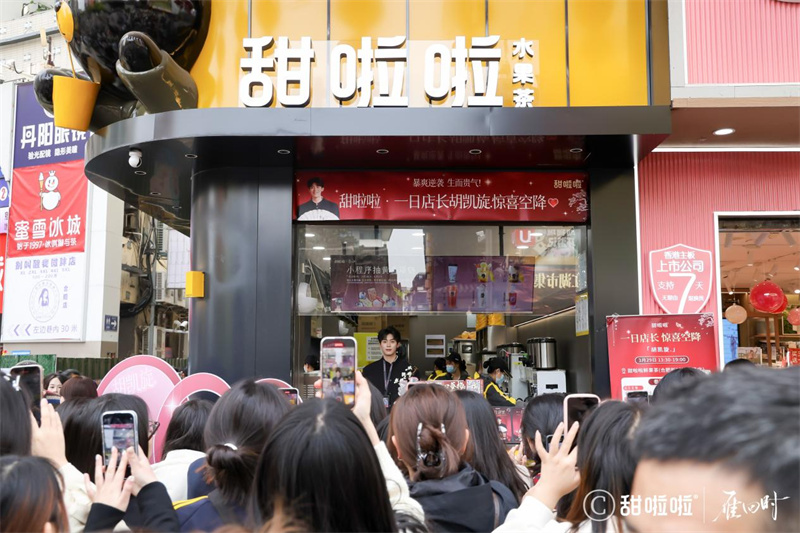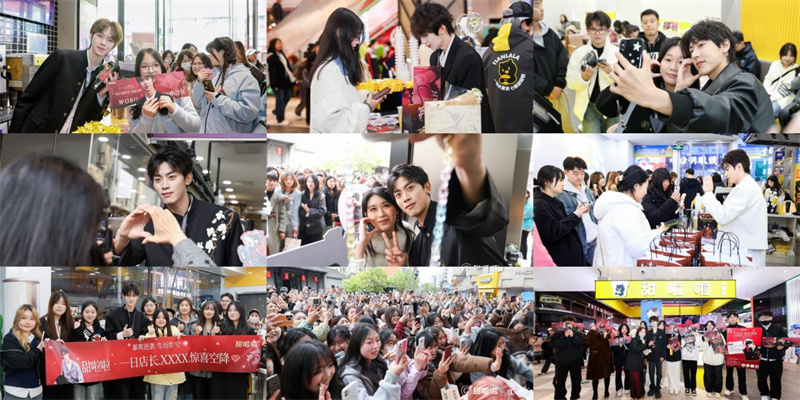Release time:2025-09-05 09:52:20 Publisher:Tianlala
At the FBIF2024 forum, Ma Jun, Brand Director of Tianlala, shared that the brand plans to reach 10,000 stores by early next year. In addition, Tianlala is expanding into overseas markets like Indonesia, the Philippines, Thailand, and Cambodia. The brand already has 13 stores in Indonesia.
Founded 2015 in Bengbu, Anhui Province, Tianlala now has over 7,800 stores. It ranked 7th in China’s top 10 tea drink brands by store count in 2023.

While many brands are now moving into smaller cities, Tianlala has been focused on these markets for years. More than 80% of its stores are in third-tier cities and towns. In comparison, Mixue Bingcheng—another brand known for its presence in smaller markets—has less than 60% of its stores in these areas.
Moving into Major Cities
Although known for its strength in smaller markets, Tianlala is now expanding into big cities like Beijing, Shanghai, and Guangzhou. It already has over 40 stores in Beijing, 10 in Shanghai, and 5 in Guangzhou.
With low prices—like ¥4 for lemonade and ¥8 for coffee—Tianlala is quickly attracting customers in these cities.
Founder Wang Wei says opening stores in major cities is important for the brand’s image. The company offers subsidies of up to ¥20,000 per store in these areas to help with startup costs.
However, Tianlala is not expanding too quickly. The brand is focused on making sure each store is profitable. “We won’t just let anyone open a store. We carefully check if the location can make money,” says Ma Jun.
Tianlala will still focus on smaller cities, where it has a strong base. “If we don’t protect our base, we could lose it. Big cities are already crowded with tea brands,” Ma Jun adds.
This strategy has helped Tianlala grow quickly. In 2023, it was the third fastest-growing tea brand in China, with 2,400 new stores—about 6.57 new stores per day.
Strength in Northern China
Tianlala is especially popular in northern China. Its fruit-based drinks and low prices (¥5–8) appeal to customers in these areas.
Over 800 stores in Northeast China saw sales increase by 800% during the Spring Festival, thanks to tourism and holiday spending.
“Northeast China was our best-performing region during the holiday,” says Ma Jun. He believes drinking tea is becoming a common habit everywhere, not just in big cities.
As people return to their hometowns or travel for tourism, smaller cities are seeing more customers. The market in these areas is expected to keep growing.
During the 2023 May Day holiday, nearly 1,000 Tianlala stores saw sales grow by over 500%. During National Day, sales were up 300%, and during this year’s Spring Festival, sales increased by 400% compared to last year.
Dealing with Price Competition
Although the market in smaller cities is large, competition is getting tougher. Many brands are lowering prices to attract customers.
Tianlala’s founder, Wang Wei, admits that profit margins are tight. For example, one of their popular drinks costs ¥4.5 to make and sells for ¥8, with a profit margin below 50%. In comparison, some premium brands have margins over 60%, but they also have higher costs for rent and staff.
Tianlala’s average profit margin is 52%. The brand uses low prices to attract more customers and encourage franchisees to open more stores.
To open a Tianlala store, franchisees must be under 45 years old and have at least ¥350,000 in startup capital. Over 50% of franchisees open a second store.
Tianlala’s customers include students, young people in small towns, moms, and office workers in smaller cities. These customers care about price but have tastes similar to those of people in big cities. So, Tianlala uses similar products and marketing everywhere.

Building the Brand
To grow further, Tianlala knows it needs to build a stronger brand. Founder Wang Wei believes brand recognition is the key to reaching 50,000 stores in the future.
In 2021, Tianlala set up a brand department. But unlike other tea brands that do many collaborations and promotions, Tianlala is taking a calmer approach.
Ma Jun has even stopped some cross-brand projects. “In such a competitive market, we don’t need to follow what everyone else is doing. We need to focus on our own goals and build the brand in a sustainable way,” he says.
Previous article:CHAGEE Introduces Product GI Values & Establishes Dual 'Scientific Sugar Control' Systems.
Next article:YGF MalaTang: Globalizing from Catering to Creating Chinese Palates.
回顶部